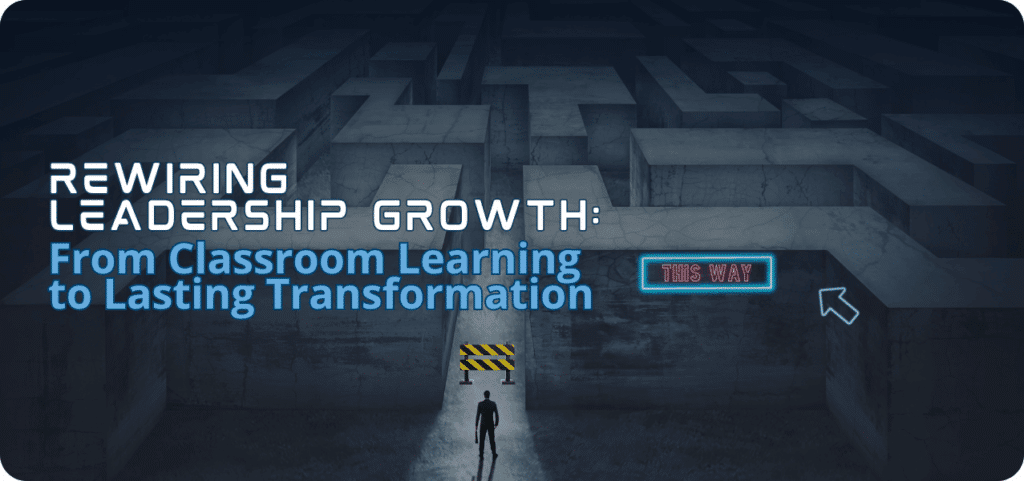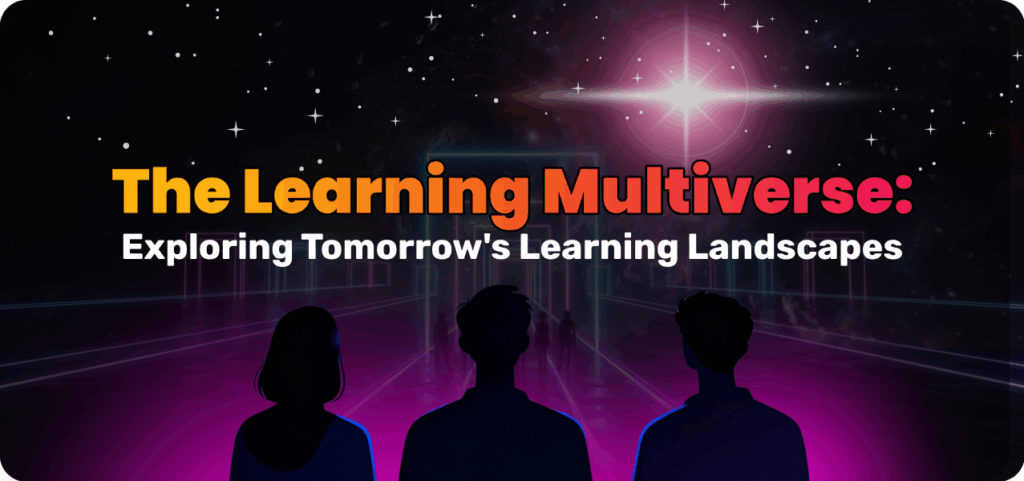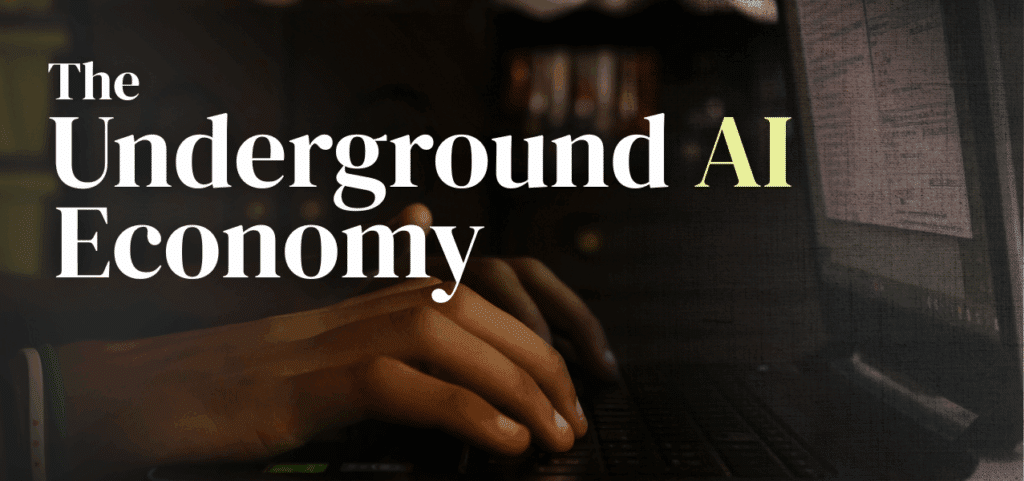Rewiring Leadership Growth: From Classroom Learning to Lasting Transformation

The demands on leadership are evolving faster than ever. With rapid market shifts, breakthrough technologies, and increasingly diverse and distributed teams, today’s leaders face challenges marked by volatility, ambiguity, and complexity. It’s no longer enough to rely solely on static knowledge or pre-scripted responses. Now, leaders must cultivate foresight, adaptability, and the ability to inspire transformation across systems.
In response, the field of leadership development has made notable strides. From neuroscience-informed coaching to AI-enabled nudges and virtual reality simulations, new tools are reshaping how leaders learn and grow. Yet even with these innovations, many programmes (both old and new) still fall short of preparing leaders for real-world unpredictability.
Why? Because too often, development remains siloed, episodic, or overly focused on knowledge transfer rather than behavioural transformation. The challenge isn’t that leadership development is broken; rather, it’s out of sync with how learning actually works in complex, high-stakes environments.
TTRO and WDHB are bringing a new perspective to leadership development by blending immersive, experiential learning with scalable digital technology. This partnership delivers what today’s leaders truly need: real-world perspective, adaptive thinking, and continuous, accessible learning at every level of the organisation. Discover more about this powerful collaboration and how it’s transforming leadership in this in-depth article.
Based on what’s happening in the L&D world today, let’s explore what needs to change, and what is already possible.
Over-Reliance on Passive Knowledge Transfer
Static leadership development models, which largely focused on developing leadership “behaviours” and were all the rage for a few years, often resemble a classroom from decades past: lecture-driven, rigidly standardised, and designed for scale, not transformation. These pedagogical approaches treat learners as passive recipients of knowledge, assuming retention and application will follow naturally. But that’s not how adult learning works (especially in high-pressure leadership environments).
Adult learners require context, relevance, and active participation to thrive. According to Synthegrate, outdated pedagogical models “ignore the individual needs, experiences, and cultures of adult learners,” leading to low engagement and poor transfer of learning into the workplace (Synthegrate).
What works better? A blend of andragogy (learner-centred methods that prioritise experience) and transformational leadership practices. Research shows that this pairing improves motivation, critical thinking, and alignment with organisational goals (ARMG Publishing, 2024).
Emerging fields like embodied cognition further support the shift toward experiential methods. These theories suggest that learning goes beyond the cognitive, heavily influenced by the physical and emotional realms. When leaders move, role-play, reflect, and apply insights in real-world conditions, they retain more information and readily shift behaviour (Meyer).
The “Off-the-Shelf” Myth
At scale, many organisations lean into “off-the-shelf” leadership programs: solutions that are templated, repeatable, and easy to deploy. But what they gain in efficiency, they often lose in impact.
Generic programs often fail to address the unique context and culture of the organisation. Leadership dilemmas are nuanced, influenced by market dynamics, industry pressures, team composition, and personal psychology. A one-size-fits-all curriculum can’t prepare leaders for this level of complexity.
Global eLearning experts note that learner diversity (across geography, identity, and experience) makes uniform content ineffective and even counterproductive. What resonates in one market or demographic may fall flat in another (eLearning Industry).
Moreover, traditional formats tend to treat leadership development as a one-off event (a workshop, a module, or a retreat, for example) rather than a continuous journey. Without reinforcement or on-the-job application, learning fades and behaviour reverts. Failure to sustain change results in wasted time and effort—a valuable resource among busy executives.
Some organisations are exploring personalised learning pathways as an antidote. However, personalisation at scale is notoriously difficult to implement. It requires advanced instructional design, robust data systems, and time-intensive coaching models (eLearning Industry).
AI is increasingly positioned as a potential solution. But can personalisation be scaled without sacrificing the benefits of shared learning experiences or the emotional intelligence (EI) that only human interaction can deliver? This is a challenge that will become increasingly crucial for L&D leaders to explore. (Geniusee).
Neglect of the Human-AI Dynamic
AI is revolutionising leadership development, offering new avenues for personalised coaching, unbiased assessments, and even predictive performance modelling. But while AI enables new efficiencies, it also poses a quiet risk: dehumanisation.
Used without intention, AI can stifle creativity and flatten individuality. Leaders may become overly reliant on data or templated feedback loops, leading to homogenised thinking that stifles innovation. According to HRE Executive, “AI can support leadership growth but must never replace the human judgement and emotional insight essential to leadership success” (HRE Executive).
True leadership requires something AI can’t replicate: intuition, empathy, contextual awareness, and the ability to connect disparate ideas in a moment of ambiguity. As the Sonarworks blog notes, while AI can generate ideas and analyse vast datasets, it’s human creativity that provides emotional depth, risk-taking, and breakthrough thinking (Sonarworks).
L&D must help leaders develop fluency in this human-AI balance: knowing when to leverage machine insights and when to fall back on gut instinct and elbow grease.
The Core Leadership Struggle Is Being a Better Human
Strip away the frameworks and buzzwords, and most leadership development comes down to one thing: human beings relating to other human beings.
Human skills (like empathy, collaboration, trust-building, and creativity) are what separate competent managers from transformative leaders. These capabilities are also the ones most difficult to train, measure, and sustain. Yet, these are the very traits organisations need to thrive in volatile conditions.
Recent research confirms that creativity, in particular, is a defining trait of effective leaders. It enables innovation, resilience, and adaptability, which are essential qualities in the face of disruption (Aurora Training Advantage; Crestcom). Research also suggests that decision-makers tend to be too risk-averse to recognize creative ideas with potential, especially if the idea in question is perceived as too “outside to box” (Harvard Business Review).
Any leadership development initiative that doesn’t prioritise the growth of human potential (both within the workplace and the individual) is missing the point.
The Skills-Based Pitfall
In response to this, some organisations have embraced a skills-based model, focusing on role-relevant capabilities over titles or degrees. While this shift promotes meritocracy and targeted growth, it carries its own risks.
Skills-based organisations often over-index on hard skills, measurable outputs, and standardised frameworks. In the process, they can lose sight of the complex interplay of experiences, emotions, and context that define human leadership. While skills-based hiring offers agility, it must be balanced with intentional development of softer, interpersonal capabilities (iMocha).
Lack of Applied Foresight
Finally, there’s a notable absence in most leadership programs: the skill of foresight.
While traditional development teaches problem-solving and communication, few programs train leaders to anticipate what’s next: to see important trends influencing the world’s trajectory, think long-term about what’s within and outside of our control, and prepare for disruption. Yet this capacity is arguably the most critical in today’s environment.
As Forbes notes, foresight isn’t about predicting the future perfectly. It’s about cultivating a mindset that is proactive, curious, and ready to drive change rather than react to it (Forbes).
Leaders who can anticipate and adapt are the ones who will shape the future, making this skill one of the most critical competencies frequently ignored by leadership development of the past.
The Call for Strategic Integration
To truly meet the moment, organisations must move toward integrated learning models that combine human experience, behavioural science, and scalable technology. This isn’t about pitting the old against the new, it’s about fusing what works into a coherent, high-impact journey.
The cost of standing still is real: disengaged talent, misaligned teams, and missed opportunities for innovation and growth. But the opportunity is just as clear. When leadership development evolves in step with the challenges leaders face, it goes beyond a support function and evolves into a strategic advantage.
We see the future of leadership development in the fusion of immersive experience, agile technology, and human insight: an approach as adaptive and forward-looking as the leaders we aim to empower.
Discover how WDHB and TTRO are bringing this vision to life in the next article in our series:
The Power of Fusion: Blending Immersive Experiences with Agile Learning Technology.
Author
Subscribe to get Access to Exclusive Content





